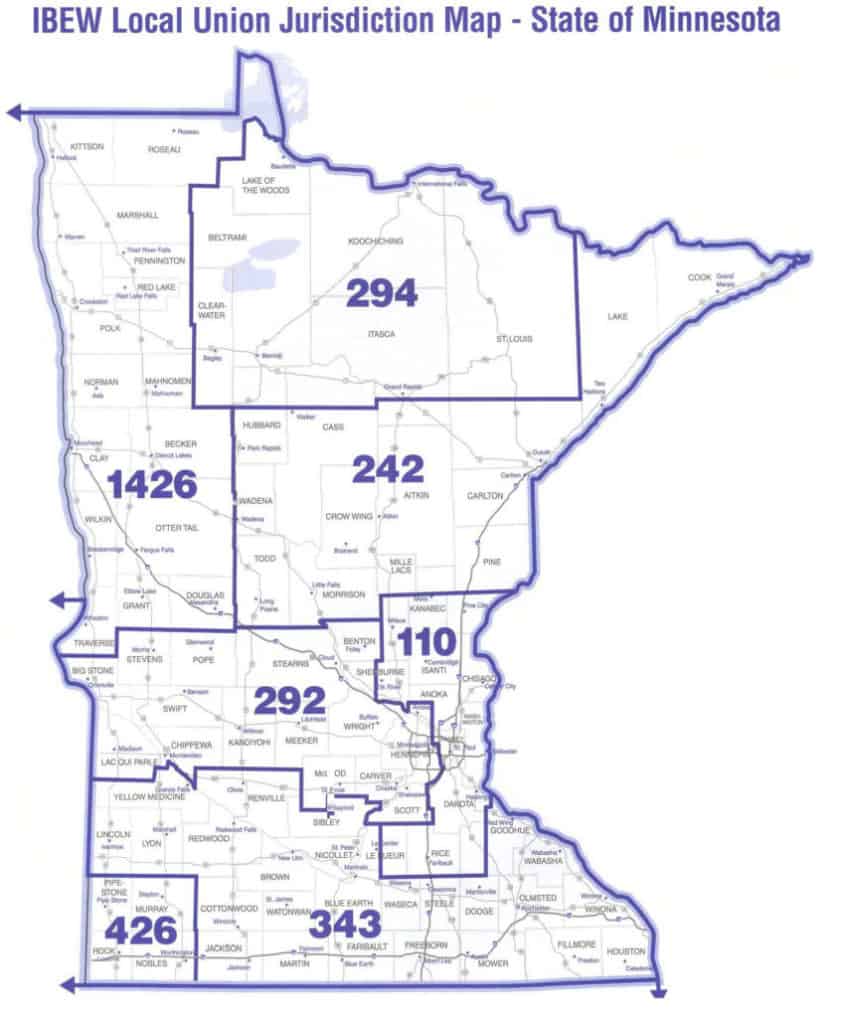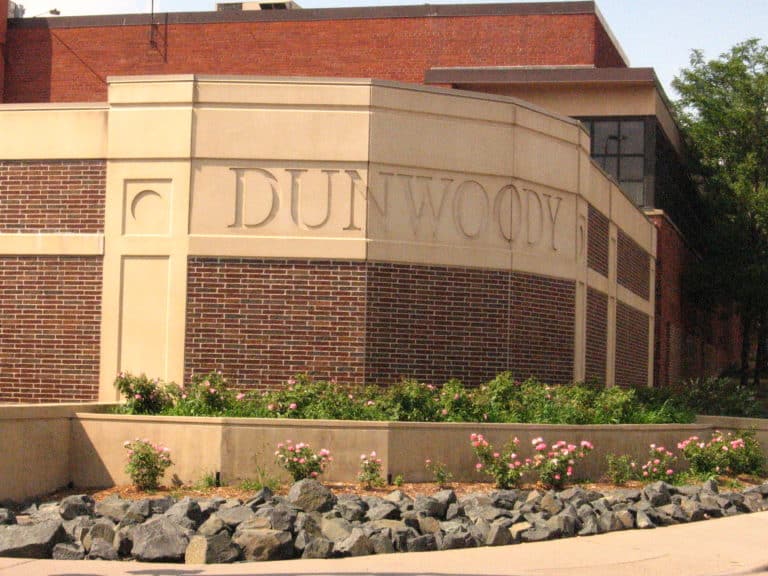History
Chapter History
In 1953, five local contractors saw the need for affiliation with a national association for electrical businesses.
Admiring the nationwide NECA tradition of leadership, challenge, and service, they formally banded together to found the “Upper Midwest Chapter, NECA” on August 7, 1953.
In 1961, the Chapter officially became the “Minneapolis Chapter, NECA,” and adjusted its jurisdiction, which had previously included North and South Dakota, to its present form, which parallels that of IBEW Locals 292 and 343.

The electrical industry can be said to have been born in 1879 when Tomas Alva Edison changed the course of history by introducing a successful carbon incandescent lamp. In fact, many of the first electrical contractors rose from the ranks of employment in the Edison Electric Illuminating Companies that were formed around the country. Other early contractors began by working for the telephone companies or for the forerunners of public utilities, which were set up to power electric street cars. As far as can be determined, the first official electrical contracting business opened shop in New York City in 1882. Soon, hundreds of other electrical contracting companies sprung up in major cities across the continent.
Trade associations began to flourish at about this same time, partly in order to represent management interests in response to the growing organized labor movement of the late nineteenth and early twentieth centuries. Local associations of electrical contractors were established to meet the needs that could not be met by individual contractors working alone. Working in cooperation allowed the contractors to share tools and skilled workers – both of which were in short supply in those days – and to exchange ideas and information, just as association members do today. Banding together also helped contractors gain a greater say in the development of local business ordinances. One of the first local associations of electrical contractors was founded in New York City in 1892.
Local groups lacked the strength and unified voice necessary to deal with some big issues, however. Among these were:
- The lack of uniformity in equipment and components
- The lack of codes, standards, and licensing/competency requirements
- The unethical business practices of some rival contractors.
- The lack of educated management and craftsmen
- The relationship with organized labor
It would take some time for the fledgling electrical construction industry to address all these concerns, but movement in this direction began before the beginning of the 20th century. By 1899, an organization representing six associations of electrical contractors within the state of New York was formed: The United Electrical Contractors of New York State.
In early 1901, the New York group was preparing for its convention at the Pan-American Exposition in Buffalo. This was to be a historic occasion. Thomas Edison himself was to be on hand to officiate at an “illumination” ceremony to launch the “electrification” of the fair, where exposition-goers were to be dazzled, for the first time ever, by the light of more than 10,000 bulbs providing instant illumination at the flick of a switch.
The United Electrical Contractors of New York State decided to make the event even more historic. They sent out a call for representatives of all the electrical contracting associations across the nation to join their convention to explore the possibility of establishing a national organization. The call was answered by 49 contractors from 18 cities in eight states (New York, Maryland, Missouri, Minnesota, Michigan, Massachusetts, Ohio, and Pennsylvania.) The prime motivation that prompted the 49 contractors to come together was the installation of electrical equipment by a wide variety of businessmen lacking any common code of ethics or protocol. The men who met in Buffalo wanted to create an industry. They were struggling, in effect, to establish an identity for their trade.
Shortly after 2:00 p.m. on July 17, 1901, this group meeting in the New York State Building on the exposition grounds had ratified into being the National Electrical Contractors Association of the United States. At that initial meeting the allied contractors elected officers and settled on Utica, NY, as home to the association’s first national headquarters. A constitution and bylaws also were adopted. As set forth in that first constitution, “The objects for which this Association is formed are the fostering of trade among electrical contractors…to reform abuses…to settle differences between its members…and to promote more enlarged and friendly discourse among its membership.”
From these humble beginnings NECA has become a national trade association with 120 chapters in the United States and 10 internationally.
Source: This Is NECA, published by NECA National
Charter Minneapolis Chapter, NECA Members
Batzli Electric – O.H. Batzli
Electric Repair & Construction – A.S. Ingebredtsen
Kvalsten Electric – John Kvalsten
Sterling Electric – Fred Garling
Suburban Electric – John Mester
Chapter Presidents
Current
Richard Morris 2024-Present
Past
Tim Dulas 2020-2021
Seaen Kosmides 2022-2023
Duane Hendricks 2011- 2012
Steve Stone 2013-2014
Wally Cisewski 2015-2017
Dave Nielsen 2018-2020
Duane Grundhoefer 2001-02
Paul Kosmides 2003-04
Joel Moryn 2005-06
Dana Daniels 2007-08
Tim Holmberg 2009-10
Roger Storms 1990-91
Richard W. Boe 1991-93
Mike Schmitt 1994
Robert Seanger 1995-96
James Rivard 1997-98
Doug Olson 1998-2000
Jerrold Ackerman 1981-82
Donald Dolan 1983-84
Charles Sattler 1985-87
Bruce Young 1988-89
Claude Cramer, Jr. 1971
Vincent E. Wilson 1971-72
Edward C. McKay 1973
Donald M. Cole 1974
Wm. H. Young 1975-76
A.J. “Jack” Landberg 1977-78
F. Delano McKay 1979-80
P.B. Tripp 1960
Robert D. Anderson 1961
Oscar Leppa 1962
Donald Green 1963
Robert Batzli 1964
H.E. Fraser 1965
John Kvalsten 1966
Jerry Brown 1967
Thomas McKay 1968
John J. O’Rourke 1969-70
O.H. Batzli 1953-54
John Kvalsten 1955-56
Claude Skeldon 1957
Dewey Wallin 1957-59
Chapter Governors
Current
Kristin Causby 2023-Present
Past
Greg Koetz 2021-2023
Tim Holmberg 2013-2016
Duane Hendricks 2017-2020
Douglas Olson 2001-04
Bruce Young 2005-2008
Paul Kosmides 2009-2012
Donald Dolan 1989-93
Charles Sattler 1994-95
Richard W. Boe 1995-00
Wm. H. Young 1977-88
H.E. Fraser 1967-76
Jerold Snyder 1960-62
P.B. Tripp 1963-66
O.H. Batzli 1953-56
John Kvalsten 1957-59
Other Recognized Members
Academy of Electrical Contracting
Oscar Batzli, Batzli Electric. Inducted 1976
Robert D. Anderson, Parsons Electric. Inducted 1985
Wm. H. Young, Collins Electric. Inducted 1987
Donald M. Cole, ERC. Inducted 1990
Donald Dolan, Parsons Electric. Inducted 1993
Richard W. Boe, Collisys. Inducted 2000
Douglas Olson, Premier Electric. Inducted 2003
Bruce Young, ColliSys Electric. Inducted 2010
Jeff Ohman, Chapter Manager, Inducted 2014
Bob Seanger, Al’s Electric of St Cloud. Inducted 2019
David Manderson. Inducted 2021
Duane Hendricks, Egan Company. Inducted 2022
Paul Kosmides, OlympiaTech Electric. Inducted 2022
National Award Winners
Douglas Olson – James H. McGraw Award, 2003
National Officers
Donald Dolan – District 7, NECA Vice President 1994-97
David Nielsen, Vice President at Large 2021
Chapter Managers
Oscar F. Norgren 1953-81
Richard A. Parenti 1981-85
Jeffrey C. Ohman 1986-2012
David Manderson 2013 – Present
Staff
Executive Director
Kristin Causby
kcausby@mplsneca.org
Administrator
Denae Simmonds
dsimmonds@mplsneca.org
Accounting
Christina Coleman
ccoleman@mplsneca.org
Student Chapters
Electrical contractors in need of well-educated, talented young people to oversee current projects and plan for future growth are advised to look to the NECA Student Chapter program.
Dunwoody College of Technology
The NECA Student Chapter at the Dunwoody College of Technology is sponsored by Minneapolis NECA. Dunwoody offers associate and bachelor’s degrees as well as a variety of certificate and diploma programs. The college also offers workforce training and can design employee training plans that meet any company’s needs.

St. Cloud Technical and Community College
St. Cloud Technical and Community College offers associate degrees as well as a variety of certificate and diploma programs. The college features an associates degree and a diploma in Electrical Construction Technology.

